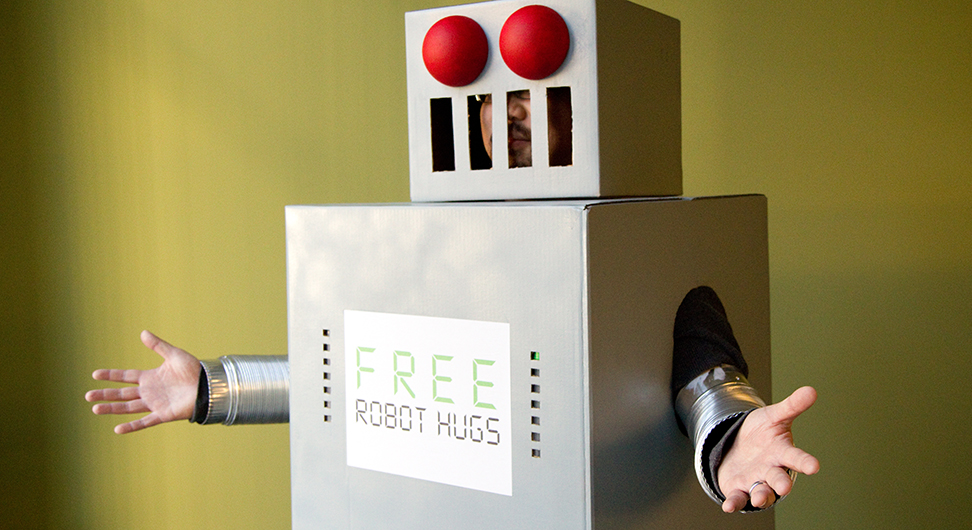Don’t Be Icarus: Social Media Automation Best Practices
The transition to Internet marketing has been messy. The web has grown increasingly large and complex, building demand for tools to help marketers deliver the correct experience to the correct user at the correct time.
With 70% of B2B marketers creating more content than they were a year ago, the task of promoting this content is often handled through varying degrees of automation.
On its face, this seems reasonable.
It’s now possible to schedule posts, synchronize channels, and automate user interactions. Is it effective, however, or simply creating more links for users to ignore and scroll past? Social network accounts can be linked, but should they be? Can content effectively be cross-promoted through multiple channels without turning off engaged users?
The latest research suggests that more is indeed more, but without a handle on best practices, or exercising some common sense, the situation can quickly get out of hand. Here’s how to automate without looking too desperate for traffic.
More is More, but…
Despite reasonable concerns about coming across as spammy, research suggests that, all else being equal, posting more frequently across more networks will generate more traffic.
Venture capitalist Tom Tunguz, for instance, performed a test to see how sharing the same piece of content multiple times on Twitter (referred to as “recirculating” content) would impact the number of retweets the content received.
He found that each subsequent circulation received 75% as many RTs as the initial post, making a solid case for sharing the same piece multiple times, as long as it performed reasonably well initially. After all, not every share is necessarily viewed by every subscriber.
This is especially true on Facebook, where only ~6% of a brand’s followers will see shared content unless the brand ponies up for paid placement. Twitter isn’t exactly much better, where a shared piece of content will reach its “click half-life” within three hours (and that was in 2011!).
Ok—so it’s a big, competitive Internet out there and sharing content more than once across networks is a reasonable tactic to garner more clicks. This does not suggest that you should blast out updates as often as possible on as many networks as possible.
What’s the best way to go about this?
Each Network is Unique. Treat Them as Such
No one wants to be the guy that takes different girls on the same date. The same goes for social media: don’t share verbatim updates across networks.
First of all, this will be annoying to the loyal followers that engage with your brand across multiple networks. Second, each network presents content to users in a unique way that demands a tailored strategy to be consistently successful.
For instance, look at how The Onion expertly tailors its social shares based upon the network:
On Twitter:
On Instagram:
Even though the content is quite similar, it needs to be designed differently to take advantage of how it’ll be displayed (and linked) on each network. These are important nuances that should be considered when sharing the same piece of content across networks.
Here are HubSpot’s latest thoughts on how to tailor each post appropriately:
Do Not Automate User Interactions
Scheduling is a fantastic way to free up time, allowing marketers to focus on other activities outside of posting on social networks all day (because they definitely don’t do that). Once content has been created, social updates have been tailored to each network, and posts have been scheduled (more on this later), it may be tempting to automate replies, favorites, or something similar to keep that automation party rolling.
Do not do that.
First of all, users will figure out that they are interacting with a machine and that is usually going to result in a negative user experience.
Have you seen her? Did Joaquin Phoenix look like he was having a good user experience?
Other examples of poor user experiences:
– Coca Cola tweeting out Mein Kampf passages
– Bank of America offering assistance to Occupy Wall Street protestors
– When Puma tweeted this:
While big brand gaffes are always good for a cheap laugh, automating human interactions can even be detrimental on a small scale.
The brave Internet pioneers at (now defunct) Optify ran a test on their own Twitter account where they examined how automatically sending a Direct Message to new followers impacted their unfollow rate.
Unsurprisingly, new followers that received an automatic direct message were 245% more likely to unfollow Optify vs. the group that did not receive any message.
That study is admittedly quite old by Internet standards (it was published in 2011, the digital stone age), but its findings were confirmed this year by Fractl and BuzzStream. These content marketing services surveyed 900 honest-to-God Internet users and asked them why they unfollowed brands.
The top two responses, accounting for 79% of the respondents, cited “too much self-promotion” and “automated messaging” as the worst offenses, significantly more grievous than “poor usage of hashtags.” #phew
Bottom line: if you are talking to a human, use another human or you’ll risk being inauthentic at best and offensive at worst, even if you believe you’re “adding value” with your “great content.”
Experiment with Posting Frequency
Much like a baseball player’s batting stance, spaghetti recipes, and determining the best Zeppelin record, there’s no one-size-fit-all method to maximizing reach on social networks. There is, however, a theoretically optimal posting schedule for a given publisher, and the only way to work towards this Internet nirvana is to experiment. Like in science, or college.
Some pointers to get your social experiments started:
- If you’re not already, start using a social media scheduling tool like Buffer, HootSuite or Tweetdeck
- Determine which variable will be considered in your experiment:
– Click through rate on a post
– Total clicks
– Engagement (RT, share, comment, etc.)
– Frequency (posts per day, posts per week)
– Timing (hour of the day, day of the week)
– Format (length of post, inclusion of a photo, inclusion of a video)
– Feedback (follower count, ad hoc feedback from users)
While this may feel overwhelming, the good news is that most of these are solved problems. Here are some best practices that can pretty safely be implemented without testing:
- Photos get more engagement across the board. Always include imagery within a social post.
- Audience research should identify which social networks to be active on, if you’re not currently sure. Buffer laid out a fantastic methodology for choosing the most appropriate social networks here. If an audience is not there, there’s no need for your brand to be there either!
- There are many well-established “starting points” for testing post timing. Start with these and adjust from there.
And remember, slow and steady wins this race. Don’t be afraid to fail, just fail quickly and adjust. Once lessons can be incorporated into an automation strategy, your hours spent on social media should decrease, freeing up precious work time for other marketing efforts.
So there you have it: it’s likely a good idea to post across networks as long as it’s done with regard to user value, the appropriate metrics are monitored, and authenticity is maintained.
Further reading:
The Do’s and Dont’s of Social Media Automation – HootSuite
Social Media Automation Strategy – Buffer
Kyle Risley is an SEO expert at Vistaprint and also provides freelance SEO consulting. When he is away from his keyboard, he’s usually at a concert or digging through records.
This work is licensed under a Creative Commons Attribution-ShareAlike 4.0 International License.






